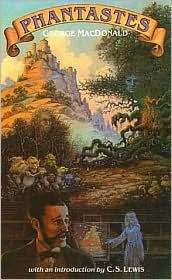
In an effort to become better acquainted with the writings of George MacDonald, I decided to read his Phantastes, a work highly acclaimed by C.S. Lewis. I have to confess it was not what I was expecting, nor, shall I say, always an “enjoyable” read. At times the story felt quite cumbersome, and beyond my intellectual capabilities, but I could never dismiss Lewis’ words of praise. So on I trudged, and I am glad that I did. I will not pretend to have a thorough grasp of this work, because I do not. Nor do I think it is possible to really be able to comprehend MacDonald’s imagery simply after one reading. No, it is too dense for that. For all that was difficult, however, the overwhelming conclusion that I came to was that I need to read it again. Not necessarily tomorrow, mind you, but at a later time when I feel up for the challenge of a reflective fantasy, and can, perhaps, more greatly appreciate MacDonald’s genius.
That being said, I did notice a number of themes and patterns that emerged, and wish I had caught them sooner. Perhaps earlier awareness would have made the opaque sections clearer, but proving that out will have to await a second reading. So, what were some impressions?
- The prominence of mirrors and reflection. This is something I wish I had picked up on sooner, but for about the last 100 pages MacDonald made frequent use of this imagery.
- Anodos, the main character, goes through a number of “water ordeals” that almost have a baptismal/cleansing imagery about them.
- This is a “coming of age” story in many respects, and arguably of one coming to age through faith in Christ (based on the ending, which I will not disclose).
- Related to the point just mentioned, I almost wonder if MacDonald didn’t have Spenser’s The Fairie Queene in mind as he wrote his story; in the sense that Anodos meets and is apprenticed by the Red Cross Knight.
- White is a very prominent color in the story, and there is an interesting Passover imagery (red marks on the door) later on that is significant.
- There seems to be a recapitulation of the story within the story that MacDonald uses to provide the reader with clues about where his story is going, and its overall purpose.
Readily admitting my limited observations, I would gladly welcome further insights on this work If you have some, please share them.
